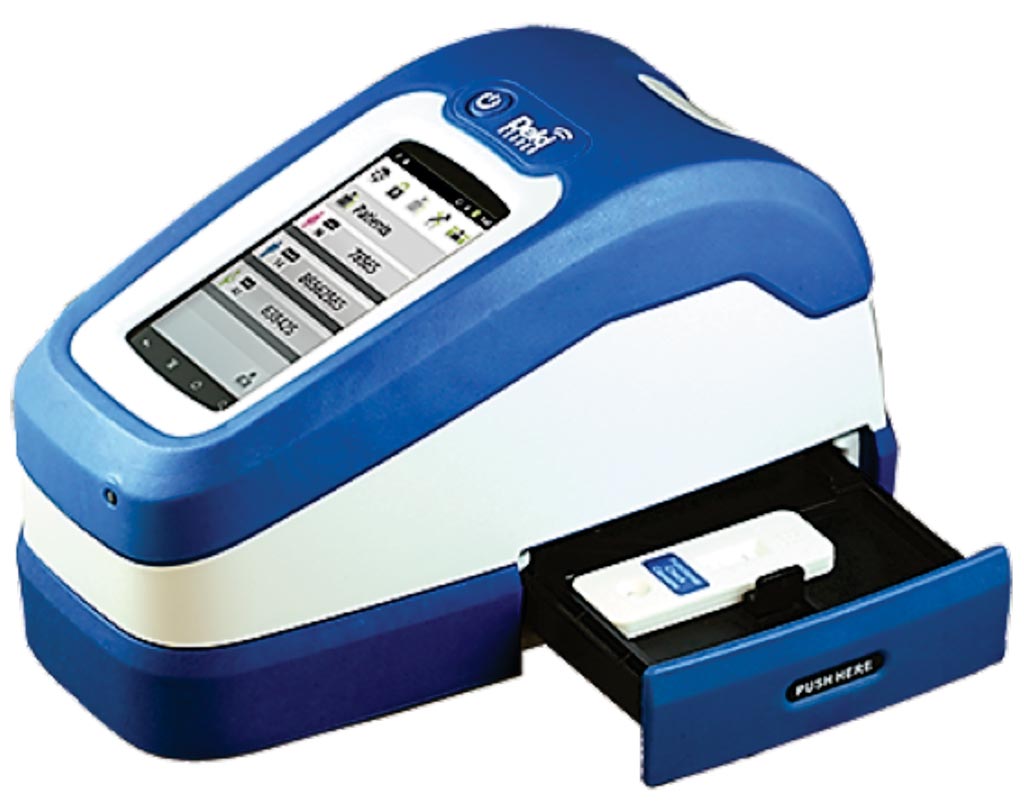Rapid Diagnostic Test for Malaria Compared
By LabMedica International staff writers
Posted on 13 Jun 2018
Malaria case management, consisting of early diagnosis and prompt effective treatment, remains a vital component of malaria control and elimination strategies. Although microscopy is a standard diagnostic tool for malaria and the gold standard, it is infrequently used because of unavailability of laboratory facilities and the absence of skilled readers in poor resource settings.Posted on 13 Jun 2018
Rapid diagnostic tests (RDTs) are being advocated and used as alternative, or as an adjunct to microscopy at health facilities because they can be easily used by health workers with less training and equipment, and can be performed by non-specialists in remote settings. The RDTs provide fast test results for initiating or maintaining treatment of patients.

Image: The Deki Reader is a rugged, in vitro diagnostic device for use with commercially available lateral flow immunoassays, commonly known as rapid diagnostic tests (Photo courtesy of Fio Corporation).
An international team of scientists working with the Kilimanjaro Christian Medical University College (Moshi, Tanzania) recruited a total of 1,293 among 1,423 outpatients with axillary temperature ≥ 37.5 °C, reported fever in the past 24 hours and/or other symptoms suggestive of malaria. The median age for study participants was 21 years and the majority of the participants (71.4%; 923/1293) were aged 18 to 24 years. More than two thirds (69.1%; 893/1293) of study participants were male.
In this study, the SD Bioline Malaria Antigen Pf/pan RDT that detects PfHRP2 (Plasmodium falciparum) and pLDH (pan) was used for malaria diagnosis alongside microscopy. Stained smears were examined by experienced senior microscopists. The Deki Reader (DR, Fio Corporation, Toronto, ON, Canada) provided automated sequential procedures to guide personnel on how to conduct the RDT test. After capturing an image and recognizing the brand of the RDT, the device prompts the user to remove the RDT from the device to proceed with taking blood samples from the patient.
The sensitivity of malaria rapid diagnostic test results interpreted by the Deki Reader was 94.1% and that of visual interpretation was 93.9%. The specificity of malaria rapid diagnostic test results was 71.8% and that of human interpretation was 72.0%. The positive predictive value of malaria RDT results by the Deki Reader and visual interpretation was 75.8 and 75.4%, respectively, while the negative predictive values were 92.8 and 92.4%, respectively. The accuracy of RDT as interpreted by DR and visually was 82.6 and 82.1%, respectively.
The authors concluded that there was no significant difference in performance of RDTs interpreted by either automated DR or visually by unskilled health workers. However, despite the similarities in performance parameters, the device has proven useful because it provides stepwise guidance on processing RDT, data transfer and reporting. The study was published on May 29, 2018, in the Malaria Journal.
Related Links:
Kilimanjaro Christian Medical University College
Fio Corporation














